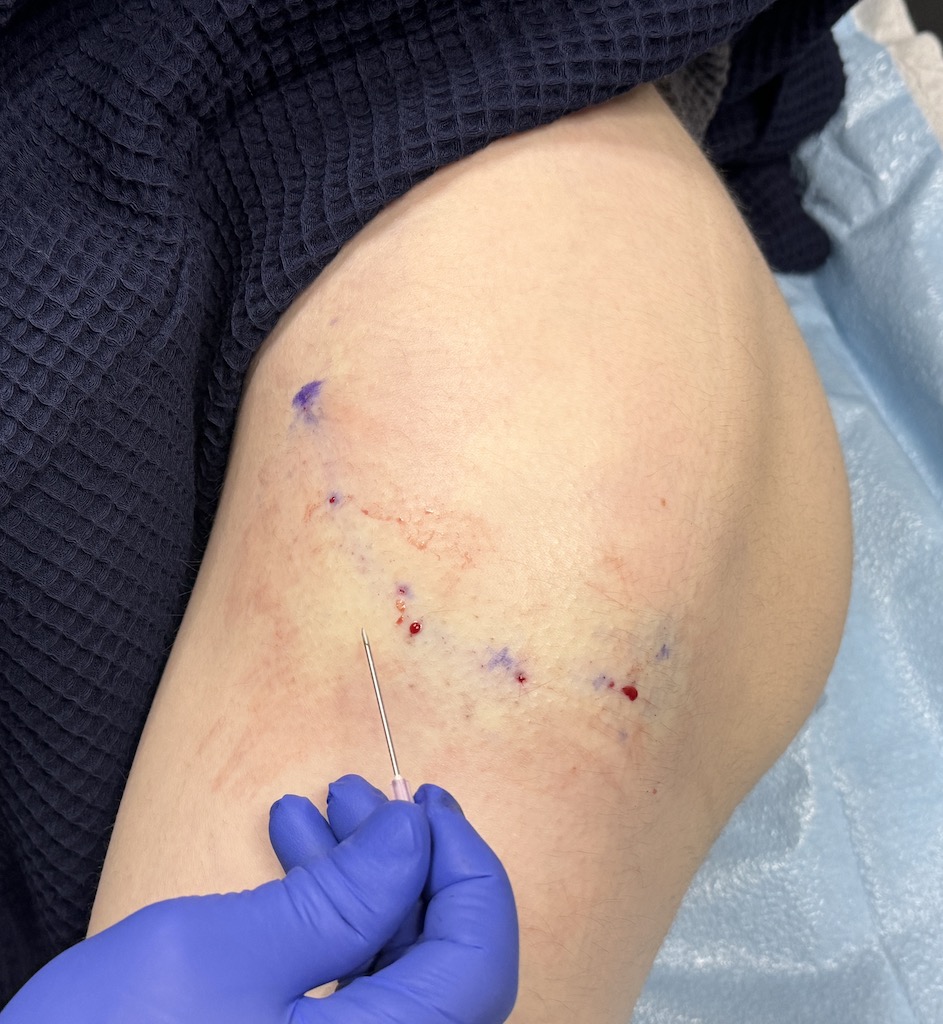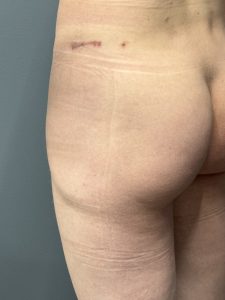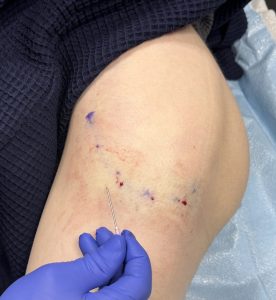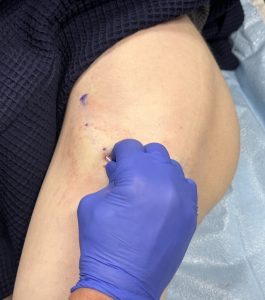Hip implants are unique amongst all aesthetic body implants. Their vertical orientation in a more superficial tissue pocket location is what separates it from other body implants. Any extremity (arm and leg) implant does also have a periodic vertical orientation but those implants are either in the subfascial or submuscular pockets which provide better implant camouflage and support. The hip implant, however, is on top of the muscle fascia (deep subcutaneous layer) where the soft tissue cover is less and the subcutaneous fat layer provides less implant support.
As a result the hip implant can develop some unique postoperative aesthetic issues which can occur at its lower half. (implant edge visibility) One reasons is an implant buckle or fold at the very thin lower edge. Since is is a vertically oriented implant and it has a feathered edge at the bottom the weight of the implant can cause its bottom third to bend or buckle) which appears as an external visible bulge Another reason for edging is inadequate pocket dissection. The implant simply doesn’t have enough space to fully lay out. Lastly the bottom edge of the dissection may have ended up stickling into the subcutaneous fat layer as opposed to laying flat on the fascia.
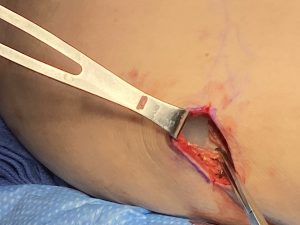
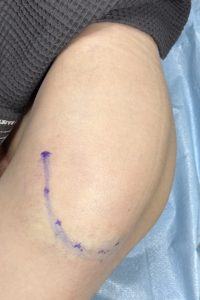
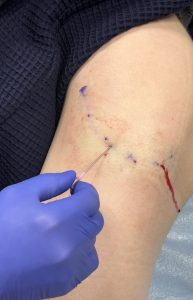
There will be some minor bleeding through the needle entrance sites as would be expected from the cutting action along the capsular tissues The needle entrance sites will not leave any visible scars. There is no need for any post procedure dressings or limitation of activity. The question then becomes how effective will it be. If the diagnosis is correct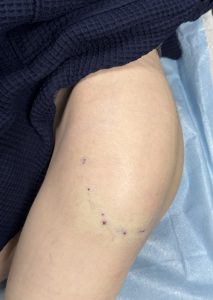
Dr. Barry Eppley
World-Renowned Plastic Surgeon

